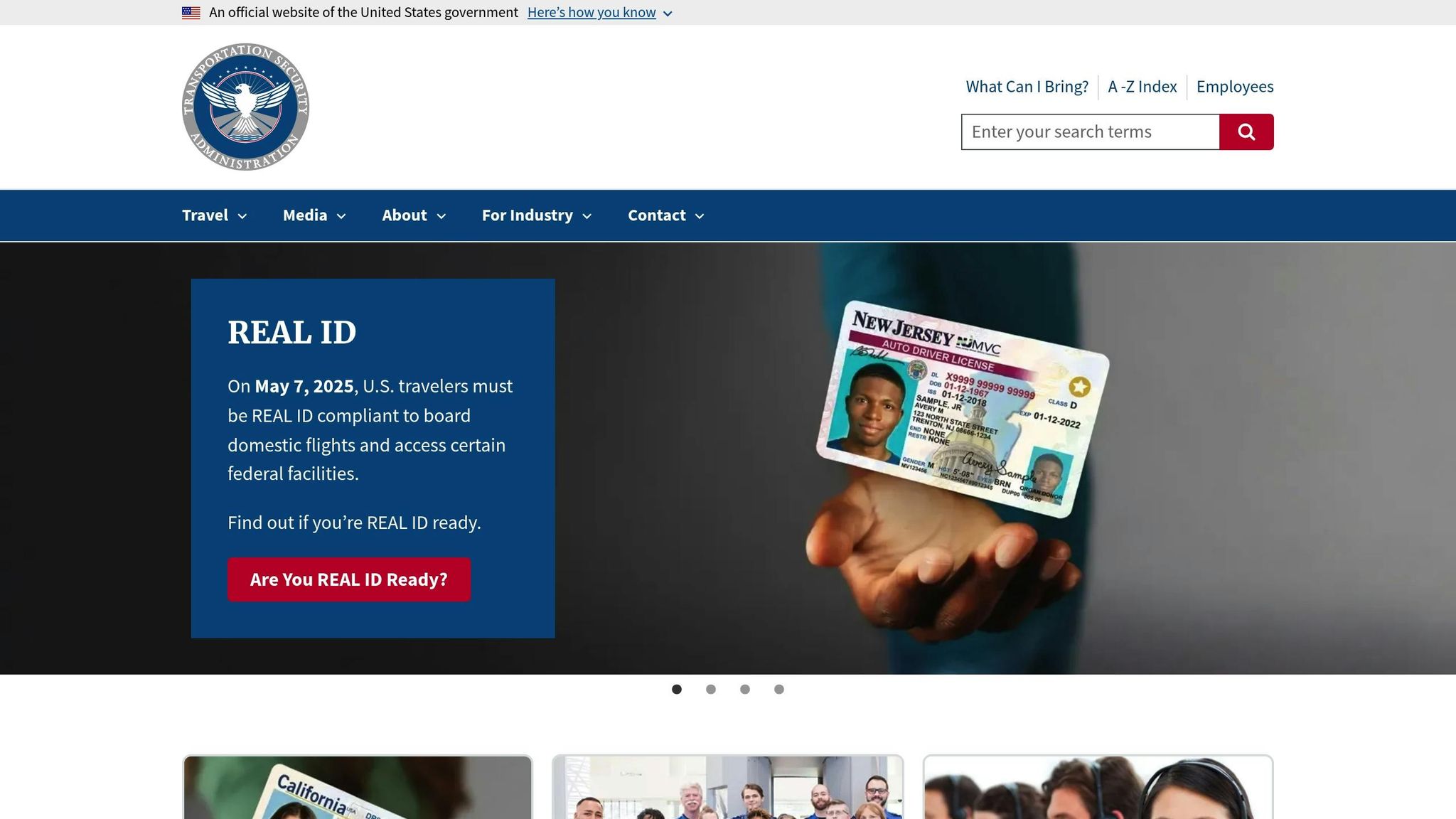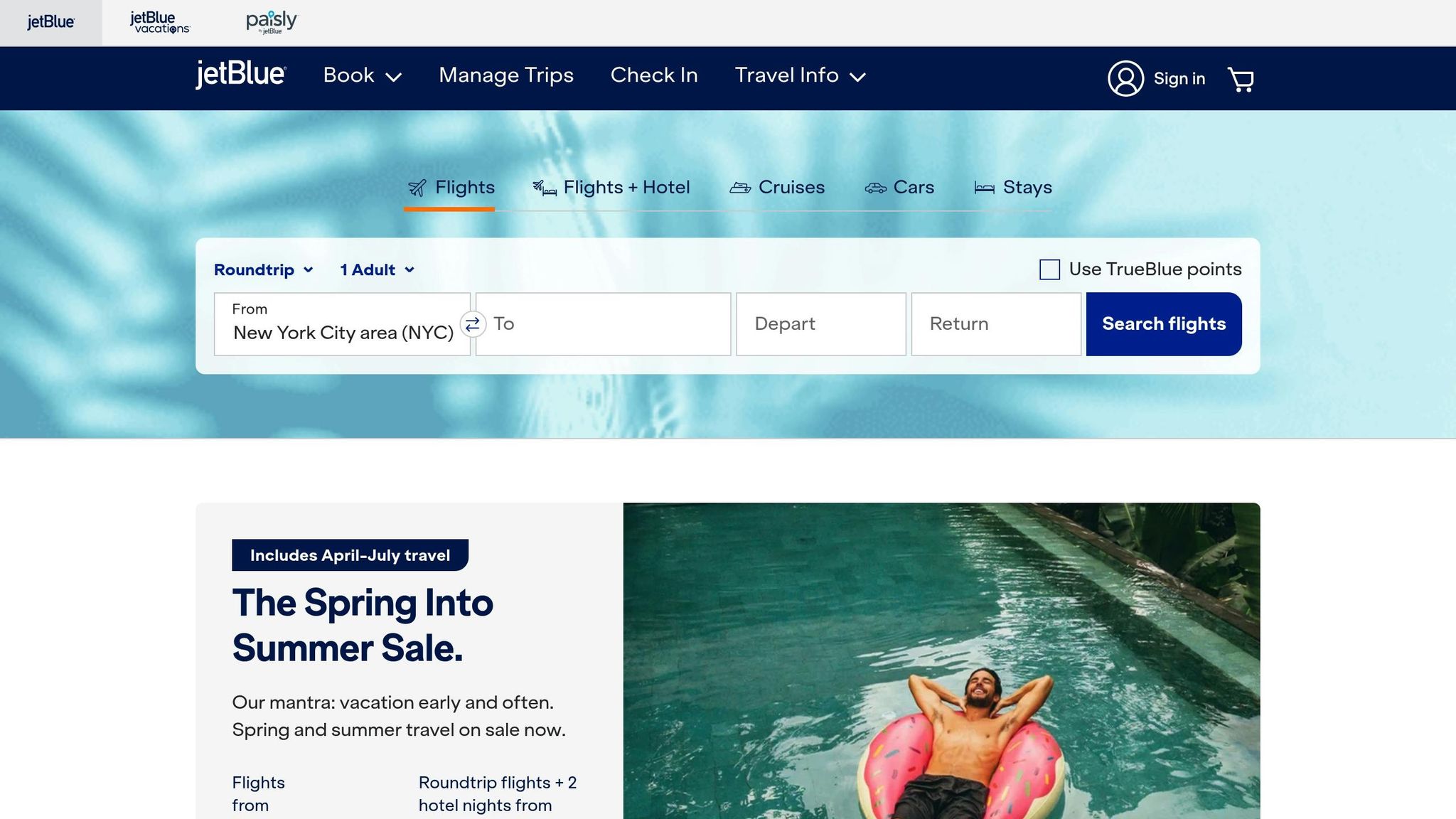Want stress-free travel in 2025? Stick to these TSA carry-on rules and airline guidelines to avoid surprises at security or the gate. Here’s a quick summary:
- Carry-on size: Most airlines allow bags up to 22" x 14" x 9" (including wheels and handles).
- Personal item size: Typically 18" x 14" x 8", fitting under the seat in front of you.
- Liquids: Follow the 3-1-1 rule - 3.4 oz containers, all in one quart-sized bag.
- Weight limits: Rare for domestic flights, but check international airline rules.
- Packing tip: Use vacuum compression bags to save space while staying within size limits.
Key takeaway: Measure your bag (including wheels and handles), check your airline’s specific rules, and pack smart to breeze through security.
NEW TSA Carry-On Rules You NEED to Know in 2025

TSA Carry-On Size Rules
The TSA doesn't set rules for carry-on sizes or weights - those are determined by airlines. To avoid issues, stick to the general size guidelines used by most carriers.
Maximum Carry-On Size
Most U.S. airlines limit carry-on bags to 22 inches x 14 inches x 9 inches, including wheels and handles. This adds up to about 45 linear inches (length + width + height). Airlines often use size-check boxes at security checkpoints to ensure compliance. Be sure to measure your bag, including external parts like wheels, handles, and expandable sections, to avoid surprises.
Personal Item Size
Airlines also allow one personal item that fits under the seat in front of you. Common dimensions for these items are around 18 inches x 14 inches x 8 inches. Examples include laptop bags, small backpacks, purses, and briefcases. To maximize space, consider using vacuum compression bags for your essentials.
Luggage Weight Limits
While domestic flights rarely have weight restrictions for carry-ons, international flights might. Wear heavier items like boots or coats during boarding, and choose lightweight, durable luggage to stay within limits. Keep in mind that rules can vary, especially if you're connecting through different countries or airlines. Always check the most restrictive rules for your trip.
TSA Rules for Liquids
Liquid Limits (3-1-1 Rule)
The TSA's 3-1-1 rule for liquids in carry-on bags is still an important regulation for air travel in 2025. Here's what you need to know:
- Container size: Liquids must be in containers that hold 3.4 ounces (100 milliliters) or less.
- Bag requirement: All containers must fit into a single, clear, quart-sized plastic bag.
- Limit per passenger: Only one bag is allowed per traveler.
sbb-itb-b1567d8
Vacuum Compression Packing Methods
Packing efficiently within TSA carry-on limits can be tricky. Modern systems now offer integrated solutions that simplify the process.
Basic Vacuum Bags
Traditional vacuum storage bags come with several drawbacks:
- They compress clothes but often create stiff, bulky packages that may not meet carry-on size requirements.
- Standard plastic materials can tear during travel.
- They require an external vacuum for resealing, making them less convenient for trips.
- Basic designs lack organization and fail to protect delicate or valuable items.
Newer travel gear, such as the Titantrek system, addresses these issues with smarter, more reliable options.
Titantrek Compression Features
The Titantrek system improves on outdated vacuum bag designs by offering a practical, all-in-one solution. Key features include:
- A compact, portable vacuum pump for easy use.
- TSA-approved locks, waterproof compartments, and anti-theft pockets for added security.
- An ergonomic design that enhances travel comfort and functionality.
"Arrived in reasonable time, seems of very good quality of materials, lots of compartments for all eventualities, very well organized, vacuum system works perfectly and the pump is powerful" [1]
"Our built-in vacuum compression system lets you pack smarter, reducing bulk while maximizing space for your essentials. Carry twice as much, with zero compromise on freedom or adventure" [1]
U.S. Airline Size Rules
Major U.S. airlines generally follow TSA guidelines for carry-on baggage but often include their own specific restrictions. Knowing each airline's policies can help you pack smarter and avoid surprises at the gate.
American and Delta Rules
American Airlines and Delta Air Lines have similar carry-on size limits, with slight differences in personal item dimensions:
| Airline | Carry-on Size Limit | Weight Limit | Personal Item Size |
|---|---|---|---|
| American Airlines | 22" x 14" x 9" | No official limit* | 18" x 14" x 8" |
| Delta Air Lines | 22" x 14" x 9" | No official limit | 17" x 13" x 8" |
*American Airlines requires passengers to lift their own bags into the overhead bins without assistance.
Southwest and JetBlue Rules

Southwest Airlines and JetBlue have slightly different size allowances compared to other carriers:
| Airline | Carry-on Size Limit | Weight Limit | Personal Item Size |
|---|---|---|---|
| Southwest Airlines | 24" x 16" x 10" | No official limit* | 16.5" x 13.5" x 8" |
| JetBlue | 22" x 14" x 9" | No official limit* | 17" x 13" x 8" |
*Both airlines expect passengers to lift and stow their own luggage without assistance. Southwest also emphasizes that carry-on dimensions include wheels and handles.
Most U.S. airlines provide sizing boxes at the gate to check bag dimensions. If your bag doesn’t fit, it will need to be checked, often with extra fees. Using soft-sided or compression-capable luggage can help you stay within these size rules while maximizing your packing space.
TSA Packing Guidelines
Building on TSA carry-on size rules, these tips will help you pack efficiently while staying within regulations.
Bag Measurement Tips
To ensure your carry-on meets TSA size limits, precise measurements are key. Be sure to measure the entire bag, including:
- The height from the floor to the top of the handle
- Any extended side pockets
- Bottom wheels
- Use airline sizer boxes to double-check dimensions
Choosing the Right Bag Material
When it comes to materials, soft-sided bags made from ballistic nylon or polyester are lighter and naturally compressible compared to hard-shell options. Using vacuum compression can further optimize packing space. Bags like the Titantrek system help reduce clothing bulk and keep everything organized.
Here’s what to look for in bag materials:
- Water resistance: Aim for a minimum IPX4 rating
- Durability: Ripstop fabrics to prevent tears
- Weight: Keep it under 3.5 pounds when empty
- Flexibility: Materials that compress without damage
These features, combined with a secure TSA-approved lock, will make your travel experience smoother.
Lock Requirements
TSA-approved locks are a must for keeping your belongings safe. These locks allow TSA agents to open and inspect your bag without breaking the lock or damaging the zipper, thanks to a universal master key system.
Look for locks with the Travel Sentry® or Safe Skies® logos. Integrated systems like the Titantrek locking mechanism offer added security while meeting TSA standards.
Key tips for locks:
- Ensure the lock has a TSA-approved logo
- Keep the combination or key in a separate, secure place
- Consider built-in locks for convenience
- Always lock your bag before heading to security checkpoints
Summary
Knowing TSA carry-on rules and picking the right bag can make travel much easier. Most U.S. airlines stick to standard carry-on sizes, but specific rules may differ depending on the airline.
Here are some tips for efficient packing:
- Size matters: Measure your bag, including wheels and handles.
- Material choice: Opt for lightweight, water-resistant, and compressible materials.
- Locks: Use only TSA-approved locks for security.
- Liquids: Follow the 3-1-1 rule - containers must be 3.4 oz or smaller, all fitting into one quart-sized bag.
Some travel gear combines these features effortlessly. For example, the Titantrek Atlas Vault backpack includes TSA-approved security features and a vacuum compression system to save space.
Although size limits are generally the same, airlines may have extra rules. Always check your airline's policies before flying. With the right bag, smart packing, and attention to details, you can breeze through security and make the most of your carry-on.

European Airlines Carry-On Size Limits 2025
How Compression Bags Save Space in Carry-Ons